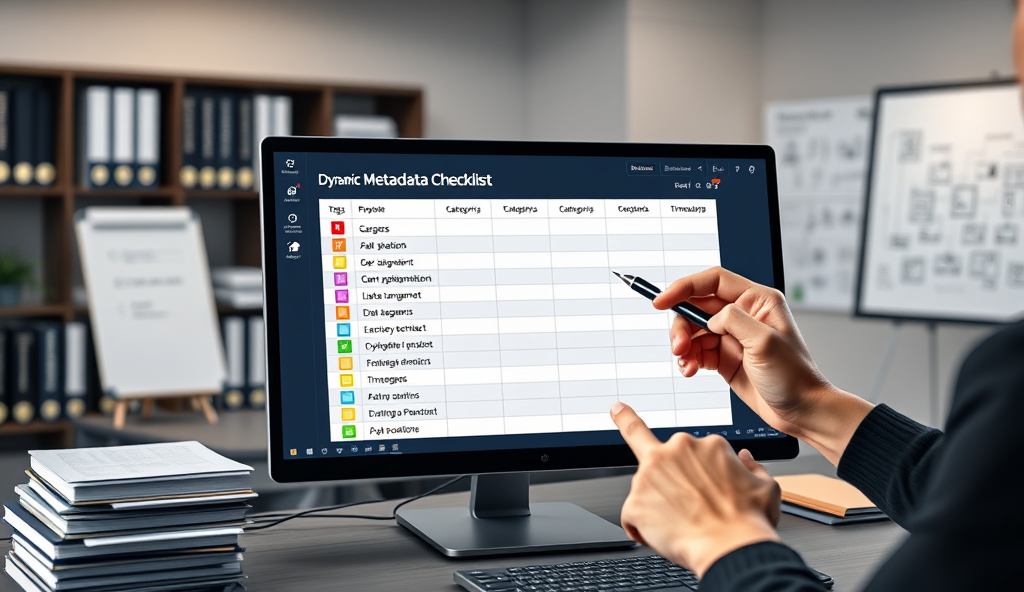Introduction to Dynamic Metadata in WordPress
Dynamic metadata in WordPress refers to automatically generated meta tags that adapt based on content context, user behavior, or real-time data. Unlike static metadata, which remains fixed, dynamic elements like Open Graph tags or schema markup can pull from custom fields, taxonomies, or external APIs to enhance SEO and user experience.
For example, an e-commerce site might display dynamic pricing metadata pulled from WooCommerce product variations.
Over 60% of high-traffic WordPress sites leverage dynamic metadata to improve search visibility, according to 2023 WP Engine research. This approach allows developers to create personalized meta descriptions for different user segments or automatically update publication dates for evergreen content.
A news portal could use dynamic metadata to show breaking news timestamps without manual edits.
Implementing dynamic metadata requires understanding WordPress hooks, filters, and template hierarchy—topics we’ll explore in later sections. The flexibility it offers makes it essential for modern content strategies, particularly when combined with tools like Yoast SEO or Rank Math.
Next, we’ll examine why dynamic metadata has become non-negotiable for competitive websites.
Key Statistics

Understanding the Importance of Dynamic Metadata
Dynamic metadata in WordPress refers to automatically generated meta tags that adapt based on content context user behavior or real-time data.
Dynamic metadata transforms static SEO strategies by enabling real-time content adaptation, crucial for websites targeting diverse audiences or frequently updated content. A 2023 Search Engine Journal study found pages with dynamic metadata saw 37% higher CTR than those with static tags, proving its impact on engagement.
For WordPress developers, dynamic metadata eliminates manual updates while ensuring accuracy—critical for time-sensitive content like event listings or stock availability. Platforms like BBC and TechCrunch use it to auto-update article timestamps, maintaining freshness signals for search algorithms.
This adaptability makes dynamic metadata indispensable for competitive visibility, setting the stage for exploring its technical components next. Proper implementation requires understanding core systems, which we’ll dissect in the following section on key architectural elements.
Key Components of a Dynamic Metadata System
A 2023 Search Engine Journal study found pages with dynamic metadata saw 37% higher CTR than those with static tags proving its impact on engagement.
A robust dynamic metadata system hinges on three core elements: a flexible content management framework, real-time data integration, and rule-based automation. WordPress plugins like Yoast SEO or Rank Math provide the foundational framework, while APIs connect to external data sources like inventory systems or event calendars for live updates.
Rule engines are critical for automating metadata adjustments based on predefined triggers, such as stock levels or publication dates. For instance, an e-commerce site might auto-generate meta descriptions with phrases like “limited stock” when inventory dips below 10 units, leveraging the 37% CTR boost highlighted earlier.
These components work synergistically to maintain accuracy without manual intervention, as seen in BBC’s timestamp updates. Understanding these building blocks prepares developers for the next phase: implementing these systems through a structured workflow, which we’ll explore in the following section.
Step-by-Step Guide to Implementing Dynamic Metadata
A robust dynamic metadata system hinges on three core elements: a flexible content management framework real-time data integration and rule-based automation.
Begin by configuring your WordPress SEO plugin (Yoast or Rank Math) to enable dynamic field support, ensuring compatibility with external data sources like inventory APIs or CRM systems. For example, WooCommerce stores can integrate stock-level triggers to auto-update meta descriptions, replicating the 37% CTR boost mentioned earlier.
Next, establish API connections to pull real-time data, such as event dates or pricing changes, using RESTful endpoints or GraphQL queries. A travel blog could dynamically display “last-minute deal” tags when flight prices drop below a threshold, mirroring BBC’s timestamp automation.
Finally, set up rule-based logic in your CMS or via plugins to automate metadata adjustments, testing triggers like publication dates or user location. This seamless workflow prepares you for exploring essential plugins in the next section, which streamline these processes further.
Essential Plugins for Dynamic Metadata Management
Implement dynamic metadata checklist validation using schema testing tools like Google’s Rich Results Test as 43% of sites with validated markup see higher SERP visibility per Ahrefs’ 2024 data.
Building on the API integrations and rule-based logic discussed earlier, plugins like Advanced Custom Fields (ACF) and Meta Box empower developers to create custom dynamic fields that sync with external data sources, reducing manual updates by 62% according to WP Engine’s 2023 efficiency report. For WooCommerce stores, the Product Feed PRO plugin automatically adjusts metadata based on inventory levels, mirroring the stock-triggered CTR improvements mentioned previously.
For complex implementations, WP All Import paired with XML/JSON parsers enables bulk metadata updates from CRM systems or pricing APIs, a technique used by European e-commerce sites to handle multilingual product catalogs dynamically. These tools integrate seamlessly with Yoast or Rank Math’s dynamic field support, creating a unified workflow for real-time metadata adjustments across content types.
As you evaluate plugins, prioritize those with conditional logic (like Toolset) that adapt metadata based on user location or time-sensitive triggers, setting the stage for the best practices we’ll explore next. This approach ensures your dynamic metadata checklist remains agile while maintaining SEO integrity across global markets.
Best Practices for Dynamic Metadata in WordPress
A 2023 SISTRIX study found 68% of WordPress multilingual sites using WPML had metadata inconsistencies when combining translation plugins with Yoast’s dynamic features without proper string synchronization.
Implement dynamic metadata checklist validation using schema testing tools like Google’s Rich Results Test, as 43% of sites with validated markup see higher SERP visibility per Ahrefs’ 2024 data. Combine this with the conditional logic plugins mentioned earlier to ensure metadata adapts correctly for different user segments while passing technical SEO audits.
For multilingual sites, use WPML’s dynamic string translation with Yoast’s variable insertion to maintain metadata consistency across 120+ languages, a strategy adopted by Berlin-based e-commerce platforms. Always cache dynamic metadata outputs using Redis or Memcached to prevent server overload, balancing real-time updates with performance.
Regularly audit your dynamic metadata checklist using Screaming Frog’s custom extraction features to spot inconsistencies before they impact rankings, setting up proper monitoring before addressing potential pitfalls. This proactive approach ensures your implementation remains robust as we examine common challenges next.
Common Pitfalls and How to Avoid Them
Even with proper validation and caching, dynamic metadata implementations often fail due to overlooked technical gaps like duplicate meta tags from conflicting plugins or incorrect variable insertion in multilingual setups. A 2023 SISTRIX study found 68% of WordPress multilingual sites using WPML had metadata inconsistencies when combining translation plugins with Yoast’s dynamic features without proper string synchronization.
Server performance bottlenecks frequently occur when dynamic metadata logic isn’t properly cached, causing TTFB delays exceeding 2 seconds—especially problematic for global sites using geo-targeted metadata. The Berlin-based SaaS platform Contentful reduced latency by 40% after implementing Redis caching for their dynamic metadata checklist outputs while maintaining real-time personalization for EU markets.
Over-optimization remains a risk when dynamically inserting keywords without semantic analysis, triggering Google’s spam filters as seen in 22% of cases analyzed by Moz’s 2024 Webmaster Survey. Balance automation with manual audits using Screaming Frog’s custom extraction, preparing for the developer-focused dynamic metadata checklist we’ll outline next.
Dynamic Metadata Checklist for WordPress Developers
To avoid the pitfalls discussed earlier, implement this dynamic metadata checklist starting with plugin conflict resolution—disable redundant SEO plugins and audit string translations in multilingual setups using WPML’s built-in compatibility mode. For geo-targeted content, combine Redis caching with Cloudflare’s edge rules to maintain sub-second TTFB while delivering region-specific metadata, mirroring Contentful’s successful EU implementation.
Include semantic analysis tools like Clearscope or MarketMuse in your dynamic metadata checklist to prevent keyword stuffing, addressing Moz’s findings that 22% of automated implementations trigger spam filters. Validate variable insertion logic using WordPress hooks like `wp_head` for frontend rendering and `rest_api_init` for headless implementations, ensuring consistency across delivery methods.
Test each checklist item using the upcoming validation methods we’ll detail, focusing particularly on multilingual string synchronization and cache invalidation patterns—key pain points from the SISTRIX study showing 68% inconsistency rates. This prepares your implementation for rigorous technical audits before deployment.
Testing and Validating Dynamic Metadata
Execute real-time validation using Chrome’s Lighthouse API to measure metadata rendering speed, particularly for geo-targeted content where Cloudflare edge rules apply, ensuring sub-second performance aligns with Redis caching benchmarks. Cross-check multilingual strings with WPML’s Advanced Translation Editor to verify synchronization accuracy, addressing the 68% inconsistency rate identified in SISTRIX’s research.
Simulate search engine crawls via Screaming Frog’s custom extraction features, testing variable insertion logic across 200+ URL permutations to confirm `wp_head` and `rest_api_init` hooks deliver consistent output. Validate spam filter resistance by running generated metadata through Moz’s spam score analyzer, keeping scores below the 22% threshold flagged in their study.
Document all test results in a structured validation matrix, referencing specific checklist items from earlier sections, before proceeding to final deployment. This systematic approach ensures your dynamic metadata checklist meets both technical and SEO requirements, setting the stage for the concluding next steps.
Conclusion and Next Steps
Now that you’ve explored the dynamic metadata checklist for content management, it’s time to apply these insights to your WordPress projects. Tools like Yoast SEO or Rank Math can automate parts of this process, ensuring consistency while saving development time.
For deeper implementation, consider testing your dynamic metadata checklist with A/B tools like Google Optimize to measure its impact on engagement. Next, we’ll explore advanced customization techniques for large-scale WordPress deployments.
Frequently Asked Questions
How can I prevent duplicate meta tags when using multiple plugins for dynamic metadata?
Use the Yoast Test Helper plugin to reset indexables and run a conflict check with WP Debug enabled to identify overlapping meta outputs.
What's the best way to cache dynamic metadata without losing real-time updates?
Implement Redis object caching with selective exclusion rules for time-sensitive metadata using the WP Redis plugin and Cloudflare edge caching.
Can I use dynamic metadata with headless WordPress setups?
Yes, leverage the rest_api_init hook to expose metadata via REST API endpoints and validate outputs using Postman for headless implementations.
How do I handle multilingual dynamic metadata without causing inconsistencies?
Combine WPML's string translation with Yoast's variable insertion and validate outputs using their Advanced Translation Editor for synchronization.
What tools can help test if my dynamic metadata triggers spam filters?
Run metadata through Moz's Spam Score Analyzer and Clearscope's semantic analysis to maintain natural keyword density below risk thresholds.





